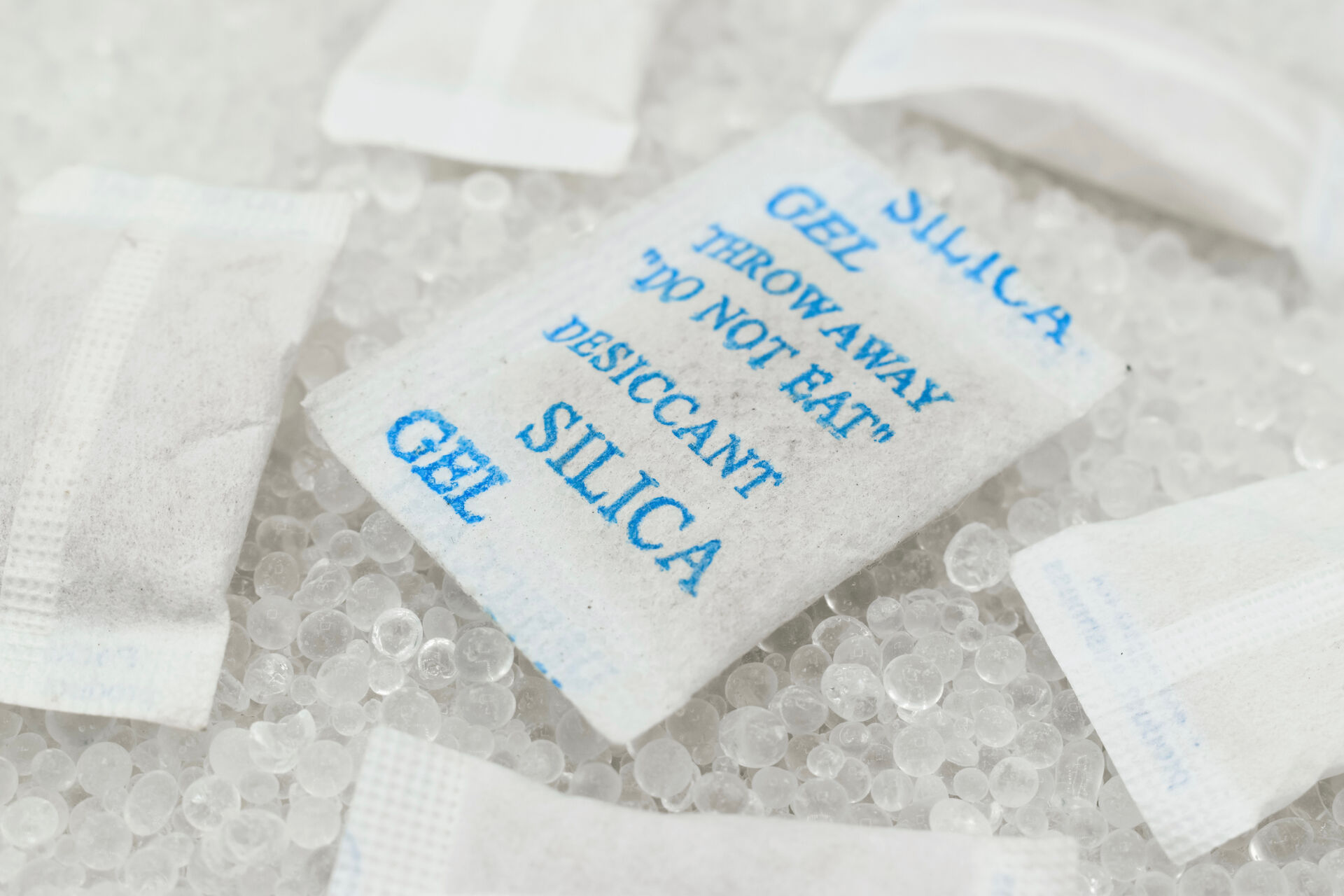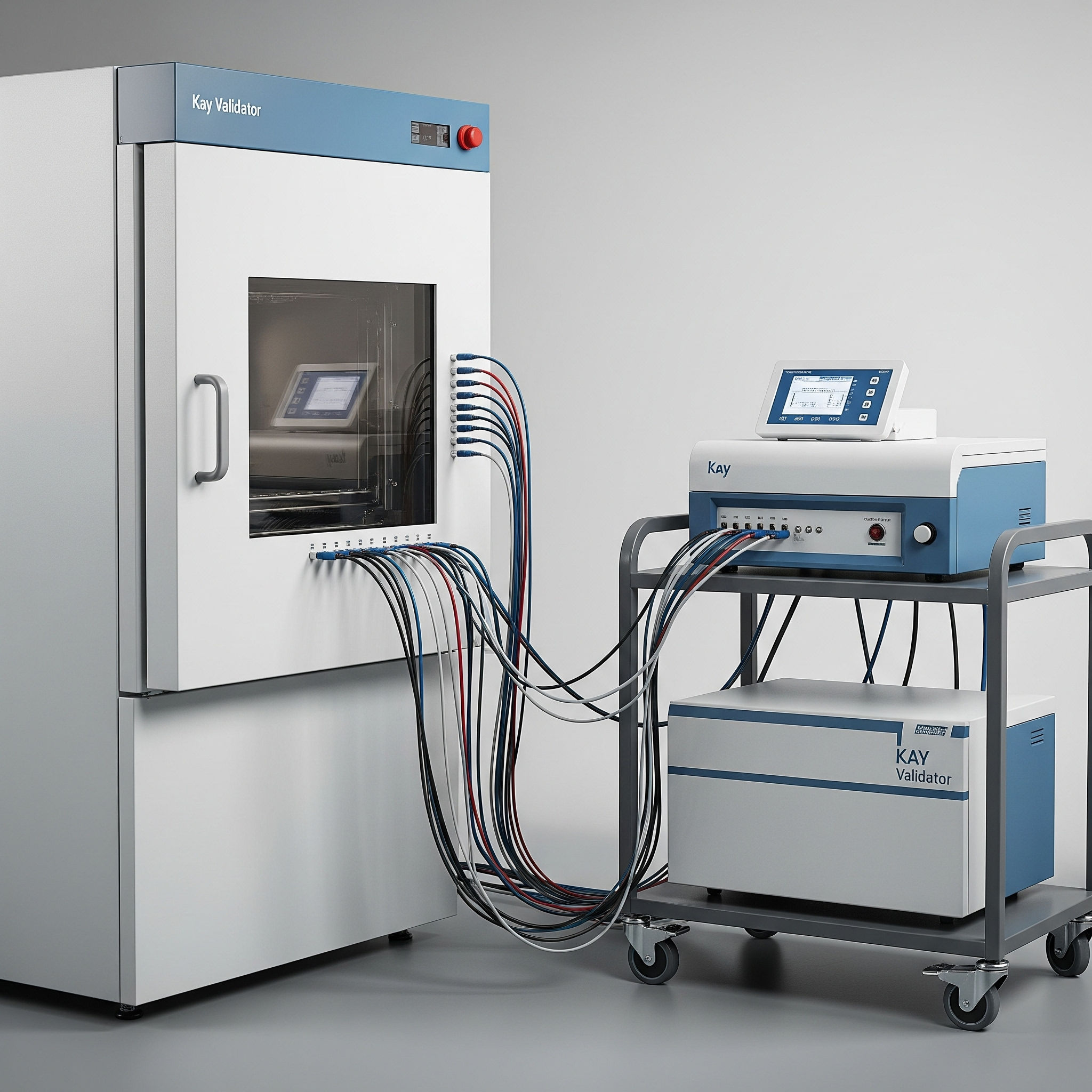What is really going on with a desiccant pack over the life of your study? It turns out these little guys are giving it all they’ve got to keep our product from failing moisture specifications.
Desiccant packs are so common that people take them for granted, assuming that whoever packaged the product must’ve known what they were doing and what was best. It’s up to us stabilitarians to prove if that is actually true. Over time and depending on the water vapor transmission rate (WVTR) of a package, the health of a desiccant will change and be reflected in the container’s internal humidity and in product’s moisture uptake. What is actually happening inside the container as the desiccant fights valiantly to keep product dry is surprisingly more complicated than one might think.
This article will focus on three aspects that impact the desiccant’s efficacy. Namely the amount of desiccant, its type, and the severity of moisture exposure.
Relative Humidity Inside a Desiccated Container
It’s important to understand that a desiccated container does not equate to a dry container. Desiccant does not suddenly fail one day and leave your product unprotected from moisture. Desiccant, fresh or not, equilibrates inside the container at some relative humidity corresponding to the moisture content in the desiccant. As the desiccant material absorbs more moisture the equilibrium shifts, raising the relative humidity that it is capable of maintaining. Each desiccated container has its own independent controlled environment that is slowly changing over time.
At room temperature, for example, Silica Gel with 8% moisture content maintains an RH of about 20% in a closed container. That same packet at 20% moisture content maintains RH at about 40%. There is a sweet spot for each application, when the silica gel is actually protecting the product and there is an unsweet spot when RH rises within the container so that product absorbs enough moisture to fail.
Amount of Desiccant
The amount of desiccant used will affect how long it will take until the RH within the product container rises to detrimental levels. That explains why some products might have two or even three desiccant canisters—not because more keeps it dryer, but more keeps the RH down longer.
Based on the WVTR of a container the time necessary to reach a certain RH within the container can be determined. This certainly would’ve been calculated by the packaging engineers for final product packaging, but for an R&D study in new packaging materials or for solid API studies in bags mimicking commercial distribution packaging, stability persons can help ensure that the correct amount of desiccant is used.
Here is a practical example to illustrate calculation of representative desiccant amounts for stability studies: Let’s take a 30-gallon drum of API powder for commercial distribution that has a 100g pouch of silica gel desiccant. To use the same 100g pouch in a small 1-gallon stability drum would clearly not represent commercial conditions through a 24-month shelf life since the stability bags have smaller surface area and the moisture transmitted through the film will be considerably less than the commercially distributed packaging. By using the same 100g pouch, a sample on stability would be far better protected through shelf life than commercial product—not that we want it to fail, but it needs to be a fair fight. Here’s an example calculation:
Assuming: WVTR of 0.8g/month/m2 at 25°C/60%RH
Commercial bag using a 100g desiccant pouch:
Bag Surface Area: 70cm x 110cm x 2 surfaces = 1.54m2
Moisture transfer through shelf-life: 1.54m2 x 0.8g/month x 24 months = 30g/2 years
Absorption: ~30% absorption in a 100g desiccant pack
Stability bag using a 10g desiccant pouch:
Bag Surface Area: 20cm x 40cm x 2 surfaces=0.16m2
Moisture transfer through shelf-life: 0.16m2 x 0.8g/month x 24 months = 3.0 g/2 years
Absorption: ~30% absorption in a 10g desiccant pack
Based on this, the commercial and stability packaging would each see the silica gel absorb close to 30% w/w moisture at which point they are basically saturated and no longer offering much protection. In this example, then, a 10g desiccant pouch could be appropriately representative of the 100g desiccant amount used in commercial distribution. Note that this and other examples are assuming absorption by the desiccant only and do not account for absorption taking place in the product.
On the drug product side we rarely see more than one desiccant canister or single canisters larger than 1 g as they interfere with accessing the product and are not worth the complaint calls. Instead of increasing desiccant amount to prolong protection, other viable solutions are to use more protective packaging or to use a different desiccant that is more absorbent.
Type of Desiccant
The more well-known types of desiccants used in the pharmaceutical industry are silica gel (indicating and non-indicating), Montmorillonite (Bentonite) clay, molecular sieves (Synthetic Zeolite), calcium oxide (quick lime) and calcium sulfate (DrieriteT). These each have different absorption rates and equilibrate at different relative humidities and temperatures, making the selection for a given product dependent on storage requirements and product hygroscopicity.
From a stability standpoint it is important to know the absorption profile of a particular type of desiccant and how it relates to the storage conditions and WVTR of the product packaging. With that information one can determine how long to expect sufficient protection from moisture. Molecular sieve, for example, maintains a lower RH even after absorbing the same weight percent moisture as silica gel, so at 15% moisture absorption it maintains a 10% RH in the container while silica gel maintains RH at about 30%—pretty significant if trying to protect a more hygroscopic product. But the price of molecular sieve and the fact the silica gel is designated as GRAS by the FDA make silica gel more appealing if suitable for the products moisture limits.
Two interesting factors to be aware of are the tendency of some desiccants to desorb moisture and for others to over-dry product. Desorption can occur with silica gel and clay such that at elevated temperatures they can release water molecules into the very container headspace that they spent years absorbing moisture from. For example, after three years of absorbing moisture at 25°C, a sudden temperature excursion to 35°C could cause what was a healthy 30%RH inside the container to jump to a dangerous 60% or higher and that moisture is trapped until the temperature drops, possibly resulting in many hours of elevated moisture exposure. At the opposite end of the danger is over drying, which the more aggressive desiccants like Calcium Oxide and Molecular Sieve could achieve since they can actually maintain practically 0% RH, especially early in their use. Ideally the danger of over drying would be recognized earlier in development and shouldn’t be an issue for commercial stability programs.
Severity of Moisture Exposure
At one extreme we have in-use and accelerated studies bathing a container in moisture and at the other extreme we have frozen product and product in metalized containers or glass bottles with essentially a zero WVTR. For the latter, given the minimal water vapor transmission nearly any desiccant would maintain peak absorption strength through the life of a stability study, but any product still calling for desiccant in those circumstances is probably very hygroscopic or moisture sensitive, therefore the real goal is probably to soak up any and all moisture that could possibly reach the product. As such, silica gel and clay that can’t keep moisture much lower than 5% RH at best might still not meet the needs even at the least severe moisture exposure.
On the other hand, in-use studies essentially doom any desiccant to failure in typical room temperature solid oral dosage presentations. Let’s take a 200mL bottle containing a 90-day supply with a 1g desiccant pack of molecular sieve. The protocol might require that a series of bottles be opened each day while at 25°C and 60% RH, thus filling the container with air containing 13.8g/m3 of water vapor. This exceeds any WVTR impact during the study. Each day the container environment is brought to equilibrium with the desiccant as it absorbs the fresh moisture introduced at opening. This results in saturation of the desiccant by the 90th day with close to 0.25g of moisture introduced. That would be 25% absorption when molecular sieve equilibrium peaks at 22 or 23%. Even silica gel, though not quite saturated, would only maintain RH inside the container at a very damp 50% by the 90th day. With at least some in-use studies required close to the end of shelf-life the daily opening regimen of an in-use study renders desiccant essentially useless.
Long term and accelerated ICH studies similarly doom desiccants. One study shows moisture absorption into a typical 60mL heat sealed HDPE bottle to be about 40mg in one month at 40°C and 75%RH. Again, after 6 months a 1g desiccant pouch would be essentially saturated at 24% w/w water. Long term Zone II climatic conditions, however, aren’t much kinder with closer to 10mg of vapor transmission in one month. That also still leads to near saturation in 24 months for a 1g desiccant pack.
Bottom line, severe storage conditions or even just long-term Zone II level exposure to moisture can overwhelm desiccant effectiveness. Changing desiccant types isn’t much help in these cases, but possibly increasing desiccant volume could increase the duration of its effectiveness. Companies are also evaluating alternative packaging than HDPE in order to be able to extend shelf life or reduce risk of moisture related failures.
Conclusion
Desiccant in pharmaceutical packaging is often taken for granted, but the work they do is much more complicated than meets the eye. Unfortunately, though, we usually have no way of knowing when and if the packet has become saturated and lost its effectiveness except by receiving bad news from the testing lab. We’ve seen from this article, however, that for typical desiccant quantities and types under normal exposure things probably aren’t quite as rosy for the desiccant, even though moisture results are passing. Fortunately, though, we only test our product for moisture, and they have proven to be more robust and thus able to meet shelf-life specifications even if the desiccant peters out.
References
- Canadian Conservation Institute, 16-Jul-2020, “Silica Gel: Passive Control of Relative Humidity – Technical Bulletin 33”
- stabilityhub.com, 27-Jul-2021, LOG Pharma Primary Packaging, “What is WVTR (Water Vapor Transmission Rate)?”
- Silicagel-desiccant.com, Silica Gel Desiccants, 20-Jun-2022, “Choosing the Right Desiccant Saves you Time and Money!”
- tis-gdv.de, German Insurance Association, Transportation Information Service, “Climate/humidity table”
- PQRI.org, Container/Closure Systems Working Group, “Determination of Water Vapor Transmission Rate for High Density Polyethylene Screw-cap Bottles”
Share This Article with the Stability Community!
June 2, 2025
So, you’ve gone through the process of formulating user requirements, chamber selection and purchase. With the equipment in place; how do we go from this [...]
April 26, 2025
It’s Stability Information Month and time to go a little further than regulations and processes and talk about people, namely the ones who comprise the [...]
March 30, 2025
In the pharmaceutical, food, and chemical industries, product stability is paramount. Ensuring that a product maintains its quality, potency, and safety over its intended [...]
Share your questions and experiences
A stabilitarian encounters new situations every day. StabilityHub’s discussion forums give Stabilitarians an opportunity to ask questions and offer solutions to specific scenarios. Join in the conversations with other Stabilitiarians and share your knowledge!
A stabilitarian encounters new situations every day. StabilityHub’s discussion forums give Stabilitarians an opportunity to ask questions and offer solutions to specific scenarios. Join in the conversations with other Stabilitiarians and share your knowledge!





